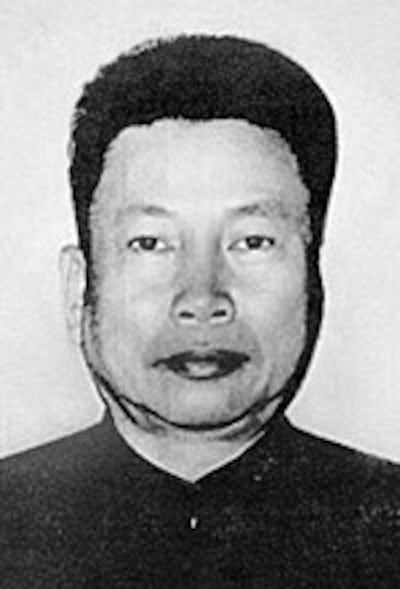
PHNOM PENH—A Cambodian artist, one of just a handful of people to survive the Khmer Rouge’s notorious Toul Sleng prison, stayed alive because he was ordered to paint the regime’s leader, Pol Pot.
They said: ‘If you can’t paint it, you will become fertilizer. You will be killed and buried in the paddyfields.’
Bou Meng, now in his sixties, is calling for justice for the victims of the Khmer Rouge mass killings in forthcoming genocide trials. He lost his wife and children to the regime’s killing fields.
“I hope that Cambodian and international judges will work together to prosecute the Khmer Rouge leaders,” Bou told RFA’s Khmer service.
“I will be happy to see justice served and the perpetrators imprisoned for the rest of their lives, so that younger generations will not repeat the same behavior.”
Taken away in a jeep
Bou joined the pro-Sihanouk resistance movement against the Lon Nol coup d’etat in 1971, which was later to emerge as the Khmer Rouge.
After the Khmer Rouge victory in 1975, he was assigned work as an artist painting portraits of Marx, Lenin, Stalin and Mao.
But eventually, he too found his way to Toul Sleng prison, where an estimated 17,000 people, including women and children, were detained, tortured, and killed after the extraction of spurious "confessions.”
Bou recalled the day he and his wife were taken away by Khmer Rouge officials:
“I was put in a jeep with my wife. We were told that the Party needed us to teach children at Sala Rachana art museum. My wife and I got ready to go. In the car, I kept thinking and became suspicious because the road they were taken did not seem to take us to the art museum.”
“The road led us to Kirirum and Toul Sleng…They made us go inside, had us sit down, told us to put our hands behind our backs, and suddenly they handcuffed us…Then my wife asked 'What have I done wrong?' I added 'And what have I done wrong? Why are we going to jail?' They answered: ‘If you wanted to know, get inside!’”
Told to paint Marx, Lenin
“Then they took pictures of us. I haven’t seen my wife since,” Bou said.
Bou remained in the prison for a year, before volunteering when guards asked for an artist.
“They unchained me from my chair, they held onto my cuffs, and escorted me to see Duch,” said Bou, referring to the head of the prison and chief interrogator Kaing Khek Iev, currently under arrest along with the one-legged general Ta Mok, the “Butcher.”
“Duch tested my painting, getting me to paint Marx and Lenin. My painting looked good and then they asked me to paint Big Brother Number One’s portrait. I was asked if I could paint. I said I could. If I could not they were going to kill me.”
“They said: ‘If you can’t paint it, you will become fertilizer. You will be killed and buried in the paddyfields.’”
Cambodia and the United Nations agreed in 2003 to jointly convene trials of former Khmer Rouge leaders.
From 1975-79, the Khmer Rouge emptied cities, singled out educated people for execution, and killed an estimated 1.7 million Cambodians through starvation and overwork.
The wholesale slaughter of intellectuals has led to problems finding suitably experienced Cambodian judges to preside over the trials.
Twenty-nine judges have been named for the tribunal, which some fear will be affected by pressure from government officials, many of whom had links with the Khmer Rouge.
Investigations will begin this summer, with formal hearings expected some time in 2007.
Original reporting in Khmer by Leng Maly. RFA Khmer service director: Kem Sos. Translation copy-edited by Stefanie Carr. Written and produced for the Web in English by Luisetta Mudie. Edited by Sarah Jackson-Han.
